Abundance: common
What: flowers, ripe fruit, juice, leaves
How: raw, preserves, cold drink, tea
Where: sunny fields, yards, borders
When: late summer through fall until frost
Nutritional Value: Vitamin A & niacin
Medicinal Summary:
Leaves - sedative (tisane)
Flowers - anti-anxiety (tisane)
Leaf Venation: Palmate venation, with prominent veins running from the base to the tip of each lobe.
Passion vine flower

Unripe passionvine fruit (maypop)
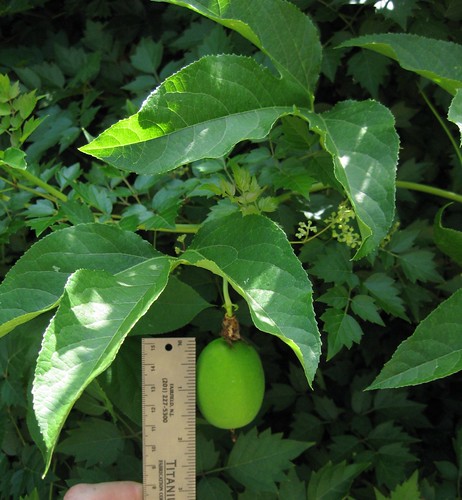
Inside of a passionvine fruit (maypop).
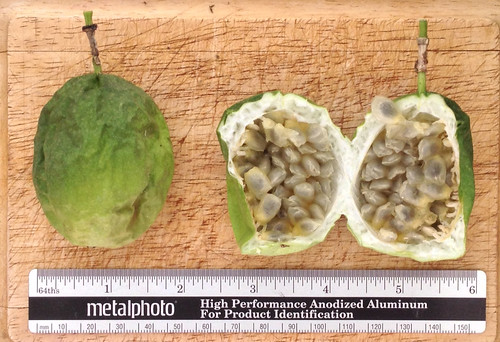
Three-lobbed passion vine leaves
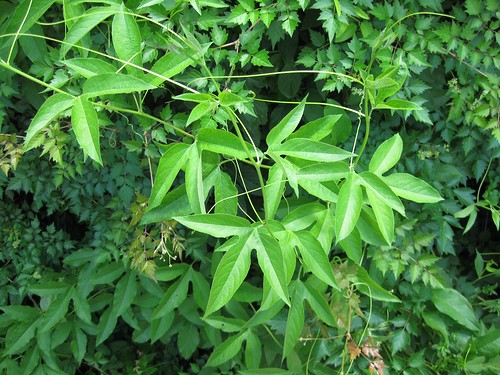
Closeup of the passion vine leaf.
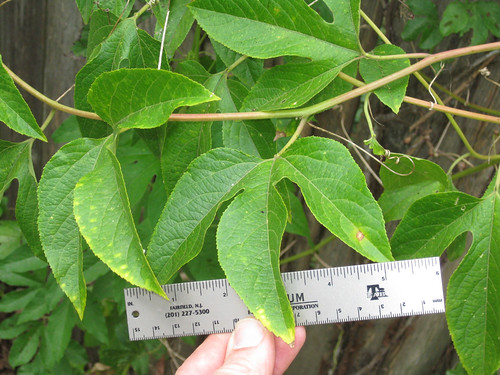
Texas distribution, attributed to U. S. Department of Agriculture. The marked counties are guidelines only. Plants may appear in other counties, especially if used in landscaping.
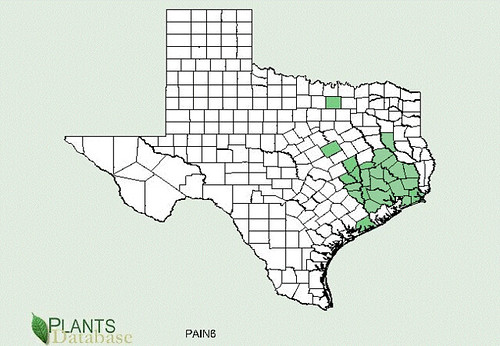
North American distribution, attributed to U. S. Department of Agriculture.
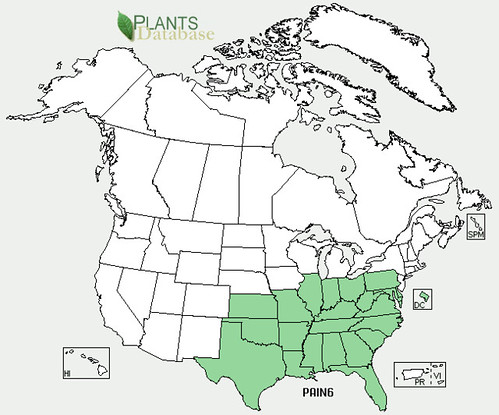
The maypop fruit is ripe when it turns from "Kermit the Frog" green to light green to yellow-orange in color. A better indication of a ripe maypop is a somewhat wrinkly skin whereas the unripe maypop fruit will have a firm, tight feel. Upon splitting the fruit you will see numerous seeds coated in a translucent goo while the inside of the skin will have a thick layer of white pulp. Suck the goo off the seeds like you were eating a pomegranate. The white pulp inside the skin is scrapped off with a spoon and eaten. Roasted seeds of these maypops are considered to be a wonderful snack in Puerto Rico.
Wild passion vines are uncommon in Texas so refrain from harvesting many the low-nutritional value fruit unless you find a vine really covered in fruit. These vines seem to produce a lot of fruit the year after a drought.
Tea made from the dried leaves and stem of the passionvine contain alkaloids with a sedative effect on humans. This tea can be purchased over the counter as a "sleepy time" the United States. Passionvines can quickly grow to cover a large area so harvesting young leaves and stems for use in tea will help keep the vine in check. As with any medicinal tea, I don't recommend drinking it more than 2-3 cups per week. They flowers can also be used for tea but they lack the sedative effect and you also lose the fruit from that flower.
Buy my book! Outdoor Adventure Guides Foraging covers 70 of North America's tastiest and easy to find wild edibles shown with the same big pictures as here on the Foraging Texas website.

